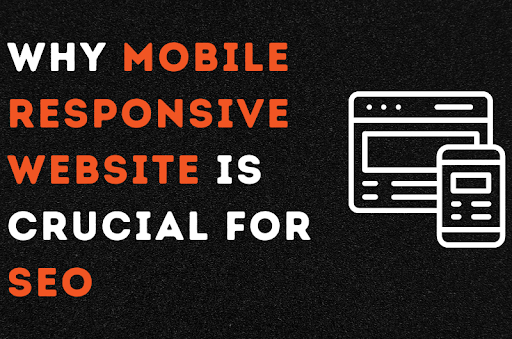Consumers now access webpages more often from their mobile devices than from desktop computers. Due to this shift, having a website that is optimized for mobile use is essential for any business looking to succeed online. In other words, mobile responsiveness has become a major factor for search engine optimization (SEO). Let’s delve into the importance of mobile responsiveness and how it can help your business succeed.
Google’s Mobile-First Indexing Algorithm
Google has implemented a new algorithm known as “mobile-first indexing” which means that Google will prioritize sites that are optimized for mobile devices over those that are not. This means that if two websites are competing for the same keyword, Google will rank the website with the better mobile experience higher than the one without. This is why it is so important for website owners to ensure their site is optimized for mobile devices in order to be successful in SEO efforts.
The Impact of Mobile Use on SEO
With more people using smartphones and tablets to access web pages, search engines have had to adjust their algorithms accordingly. Google’s algorithm now places increased emphasis on sites that are optimized for viewing on smaller screens. This means that if your site isn’t mobile-friendly, you may find yourself outranked by competitors who do have such sites.
In addition to optimizing your website design for mobile users, there are a few other best practices that can help you improve rankings in search engine results pages (SERPs). For instance, content should be concise and easy to read on small screens; images should be compressed so they load quickly; and text should be large enough to read without having to zoom in or pinch the screen with two fingers. These are all important considerations when it comes to making sure your website is properly optimized for mobile users.
The impact of mobile responsiveness on user experience
Having a website that is optimized for both desktop and mobile users ensures a good user experience regardless of what device they are using. It also allows your customers or visitors to access your content quickly and easily from any device, which increases engagement with your content and leads to more conversions or sales. Having an easy-to-navigate website gives visitors confidence in your product or service since they know they can access information quickly and easily on any device.
Impact of Mobile responsiveness on ranking
The importance of mobile responsiveness in SEO cannot be overstated. With Google’s Mobile-First Indexing algorithm, it is essential that website owners optimize their sites for mobile devices if they want to get higher rankings in SERPs. Additionally, having a mobile-friendly site ensures a better user experience and increases engagement with your content, leading to more conversions or sales. Finally, using tools such as the Mobile-Friendly Test and other page speed testing tools can help you evaluate and improve your website’s performance for mobile users. By following best practices for mobile responsiveness, you can ensure that your site is optimized for both desktop and mobile devices and drive better SEO results.
Mobile Friendly Test Tool
Google offers a tool that can help you test if your website is optimized for mobile. This tool, called the Mobile-Friendly Test, allows you to enter a URL and then view results regarding the responsiveness of your website. Additional tools such as Google’s PageSpeed Insights and Lighthouse can also be used to evaluate the speed and performance of your website on mobile devices.
How to Make the Website Mobile Friendly
Responsive design is one way to make sure that your website is optimized for both desktop and mobile users. Responsive design allows you to create one version of your site that automatically adjusts itself according to the device being used (desktop, tablet, or phone). This ensures that no matter what device someone uses, they can easily navigate through your site without having to zoom in or out on certain pages of your site. It also helps improve page speed, since all of the elements on each page are already sized appropriately no matter what device someone uses.
Conclusion:
Having a website that is friendly to both desktop and mobile users has become increasingly important in recent years due to the rise in popularity of accessing websites through handheld devices such as smartphones and tablets. If your business wants a competitive edge over its rivals, then it must prioritize optimizing its webpage designs for all kinds of devices—otherwise, you risk falling behind those companies who have done so already! That’s a great on-page SEO factor for ranking. Mobile optimization tools can provide an analysis of how well your site is currently optimized which will allow you to make necessary changes in order to achieve better rankings in SERPs and reach more potential customers online!
Still have any questions or queries related to mobile responsiveness? You can contact us at any time without any hesitation. One of our senior team members will get in touch with you to solve your queries.



